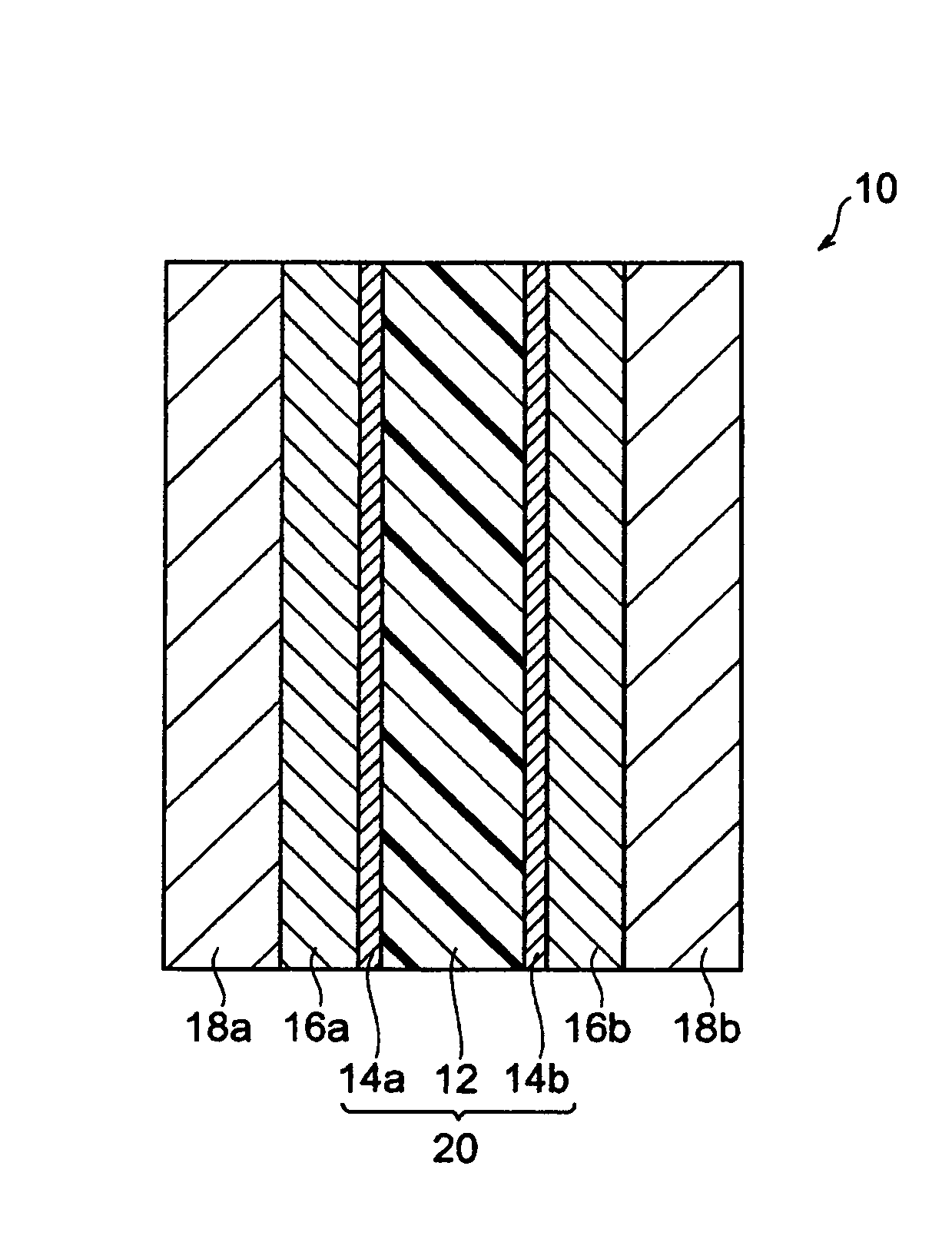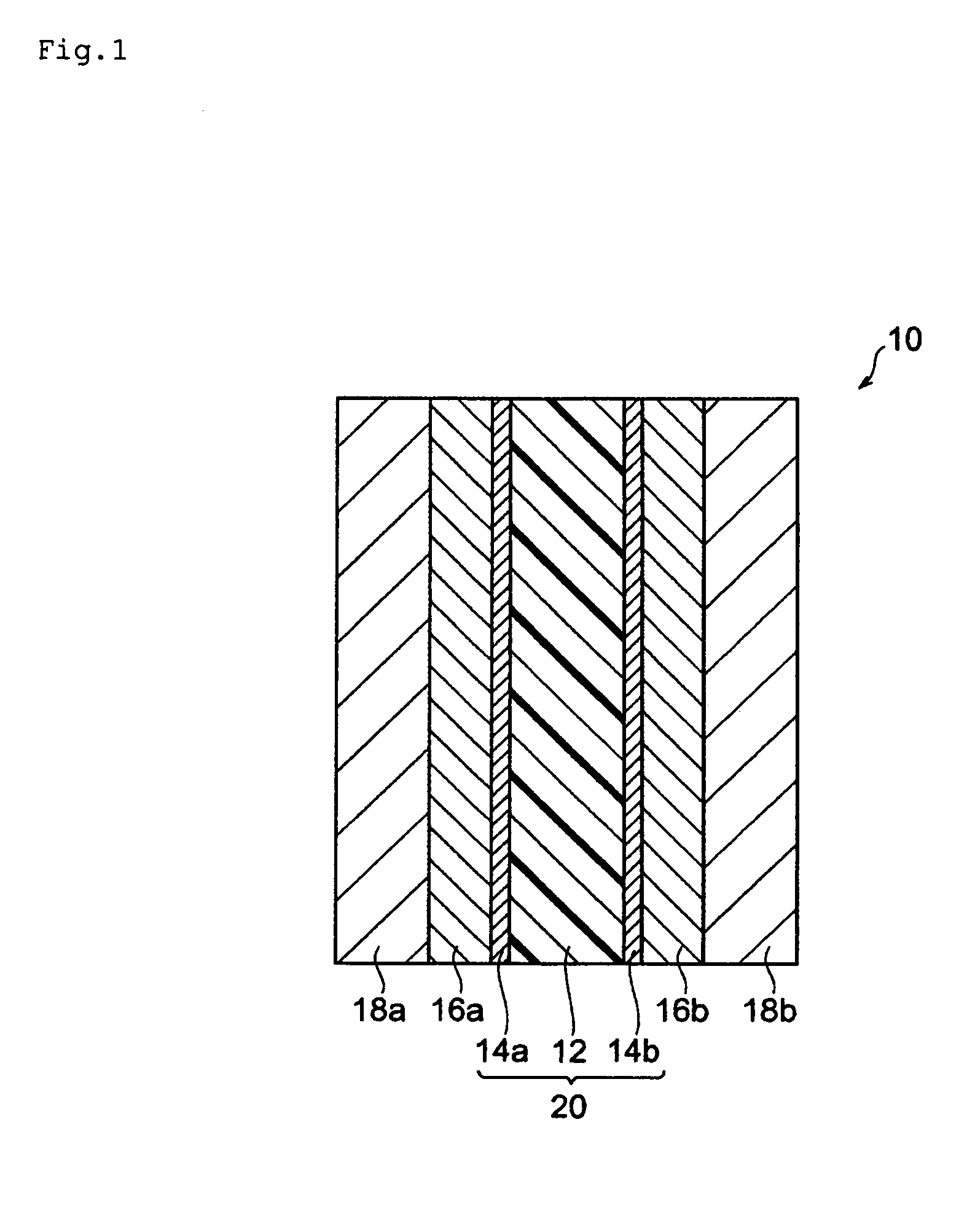Process for producing polymer electrolyte emulsion
a technology of electrolyte and polymer, which is applied in the direction of cell components, final product manufacturing, sustainable manufacturing/processing, etc., can solve the problems of reducing the electric generation performance and reducing the properties, and achieves excellent electric generation properties, simple production, and high dispersion stability.
- Summary
- Abstract
- Description
- Claims
- Application Information
AI Technical Summary
Benefits of technology
Problems solved by technology
Method used
Image
Examples
production example 1
Synthesis of dipotassium 4,4′-difluorodiphenylsulfone-3,3′-disulfonate
[0083]To a reactor equipped with a stirrer were added 467 g of 4,4′-difluorodiphenylsulfone and 3500 g of 30% fuming sulfuric acid to react them at 100° C. for 5 hours. The resulting reaction mixture was cooled, and added to a large amount of ice water and, further, 470 mL of a 50% aqueous potassium hydroxide solution was added dropwise thereto.
[0084]Then, the precipitated solid was collected by filtration, washed with ethanol, and dried. The resulting solid was dissolved in 6.4 L of deionized water, a 50% aqueous potassium hydroxide solution was added to adjust a pH to 7.5, and 460 g of potassium chloride was added. The precipitated solid was collected by filtration, washed with ethanol, and dried.
[0085]Thereafter, the resulting solid was dissolved in 2.9 L of dimethyl sulfoxide (hereinafter, referred to as “DMSO”), insoluble inorganic salts were removed by filtration, and the residue was further washed with 300 ...
production example 2
Production of Polymer Electrolyte A
Synthesis of Polymer Compound Having Sulfonic Acid Group
[0086]Under argon atmosphere, to a flask equipped with an azeotropic distillation device were added 9.32 parts by weight of dipotassium 4,4′-difluorodiphenylsulfone-3,3′-disulfonate obtained in Production Example 1, 4.20 parts by weight of potassium 2,5-dihydroxybenzenesulfonate, 59.6 parts by weight of DMSO, and 9.00 parts by weight of toluene, and an argon gas was bubbled for 1 hour while these were stirred at room temperature.
[0087]Thereafter, to the resulting mixture was added 2.67 parts by weight of potassium carbonate, and the mixture was heated and stirred at 140° C. to perform azeotropic dehydration. Thereafter, heating was continued while toluene was distilled off, to obtain a DMSO solution of a polymer compound having a sulfonic acid group.
[0088]A total heating time was 14 hours. The resulting solution was allowed to cool to room temperature.
(Synthesis of Polymer Compound without Sub...
production example 3
Production of Polymer Electrolyte B
[0095]Under argon atmosphere, in a flask equipped with an azeotropic distillation device were placed 600 ml of DMSO, 200 mL of toluene, 26.5 g (106.3 mmol) of sodium 2,5-dichlorobenzenesulfonate, 10.0 g of the following polyether sulfone which is a terminal chloro-type (Sumikaexcel PES5200P manufactured by SUMITOMO CHEMICAL CO., LTD., Mn=5.4×104, Mw=1.2×105), and 43.8 g (280.2 mmol) of 2,2′-bipyridyl, and the mixture was stirred. Thereafter, a bath temperature was raised to 150° C., toluene was heated to distill off, thereby, water in the system was azeotropic-dehydrated, and this was cooled to 60° C. Then, to this was added 73.4 g (266.9 mmol) of bis(1,5-cyclooctadiene)nickel (0), a temperature was raised to 80° C., and this was stirred at the same temperature for 5 hours. After allowing to cool, the reaction solution was poured into a large amount of 6 mol / L hydrochloric acid, thereby, a polymer was precipitated and filtered. Thereafter, an opera...
PUM
| Property | Measurement | Unit |
|---|---|---|
| volume average particle diameter | aaaaa | aaaaa |
| temperature | aaaaa | aaaaa |
| pore diameter | aaaaa | aaaaa |
Abstract
Description
Claims
Application Information
 Login to View More
Login to View More - R&D
- Intellectual Property
- Life Sciences
- Materials
- Tech Scout
- Unparalleled Data Quality
- Higher Quality Content
- 60% Fewer Hallucinations
Browse by: Latest US Patents, China's latest patents, Technical Efficacy Thesaurus, Application Domain, Technology Topic, Popular Technical Reports.
© 2025 PatSnap. All rights reserved.Legal|Privacy policy|Modern Slavery Act Transparency Statement|Sitemap|About US| Contact US: help@patsnap.com



